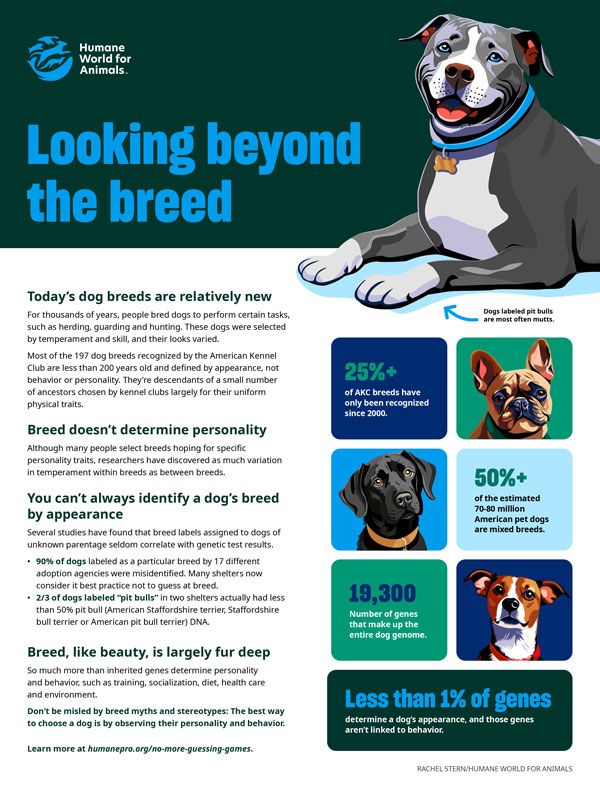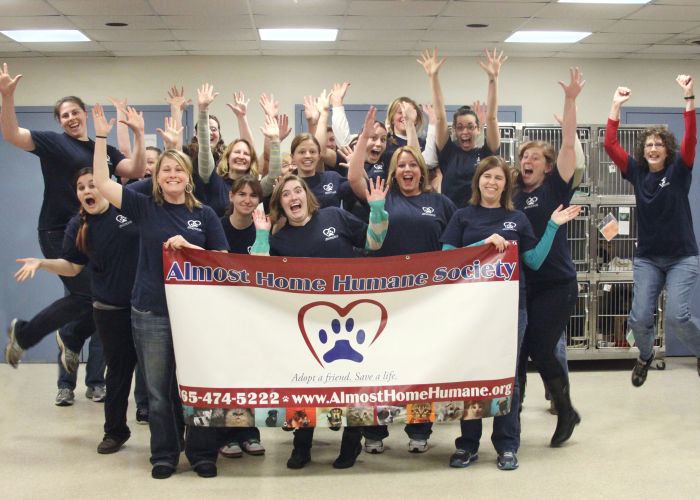Adopter handout: Looking beyond the breed
Why breed is only fur deep

Download this handout to share why breed is only fur deep with your audience.
Today’s dog breeds are relatively new
For thousands of years, people bred dogs to perform certain tasks, such as herding, guarding and hunting. These dogs were selected by temperament and skill, and their looks varied.
Most of the 197 dog breeds recognized by the American Kennel Club are less than 200 years old and defined by appearance, not behavior or personality. They are descendants of a small number of ancestors chosen by members of organizations such as the Kennel Club (United Kingdom) and Westminster Kennel Club (U.S.) largely for their uniform physical traits.
Breed doesn’t determine personality
Although many people select breeds hoping for specific personality traits, researchers have discovered as much variation in temperament within breeds as between breeds.
You can’t always identify a dog’s breed by appearance
Several studies have found that breed labels assigned to dogs of unknown parentage seldom correlate with genetic test results.
- 90% of dogs labeled as a particular breed by 17 different adoption agencies were misidentified. Many shelters now consider it best practice not to guess at breed.
- 2/3 of dogs labeled “pit bulls” in two shelters actually had less than 50 percent pit bull (American Staffordshire terrier, Staffordshire bull terrier or American pit bull terrier) DNA.
“A person looking for a pet is looking for an individual, not a breed.”
—Janis Bradley, National Research Council
Breed, like beauty, is largely fur deep
So much more than inherited genes determine personality and behavior, such as training, socialization, diet, health care and environment.
Don’t be misled by breed myths and stereotypes: The best way to choose a dog is by observing their personality and behavior.
Document








